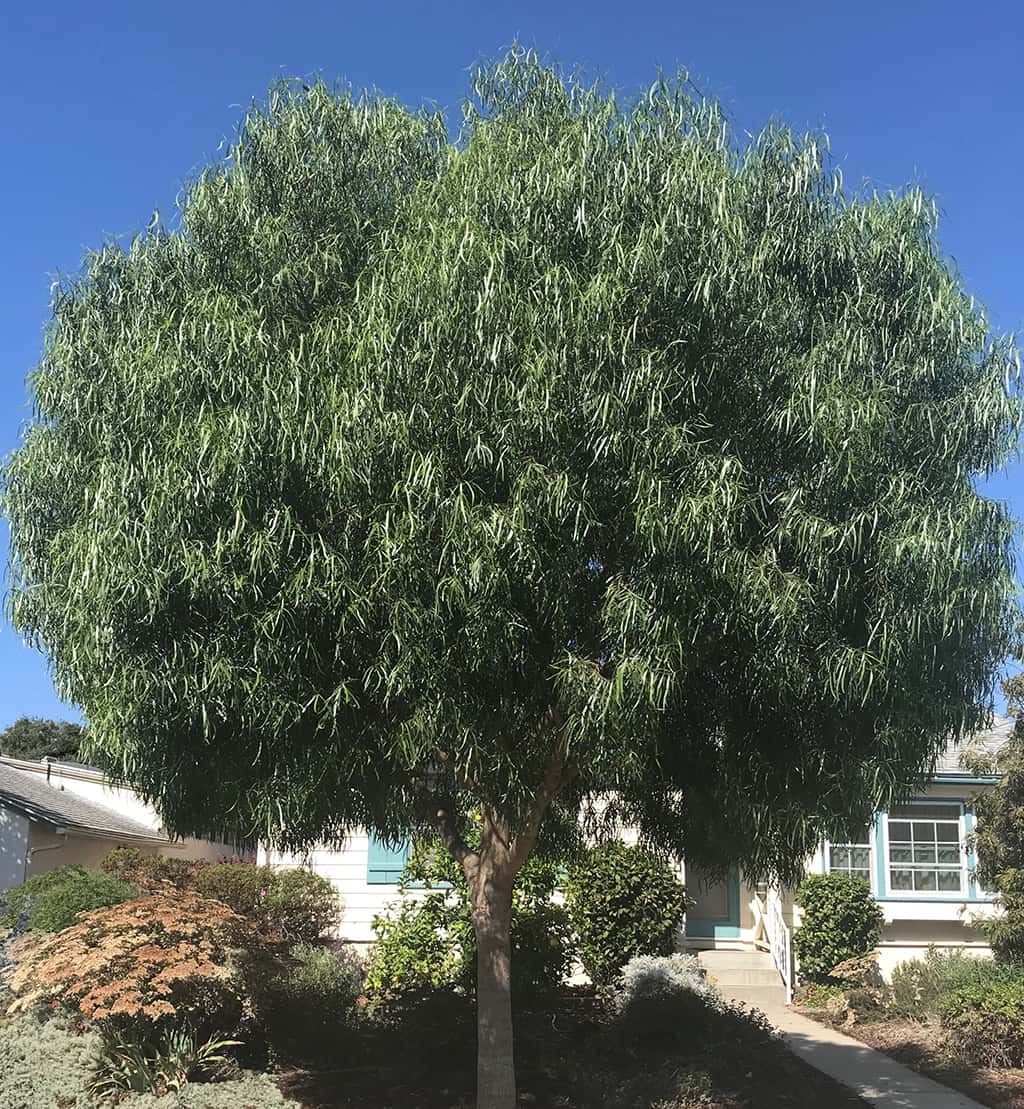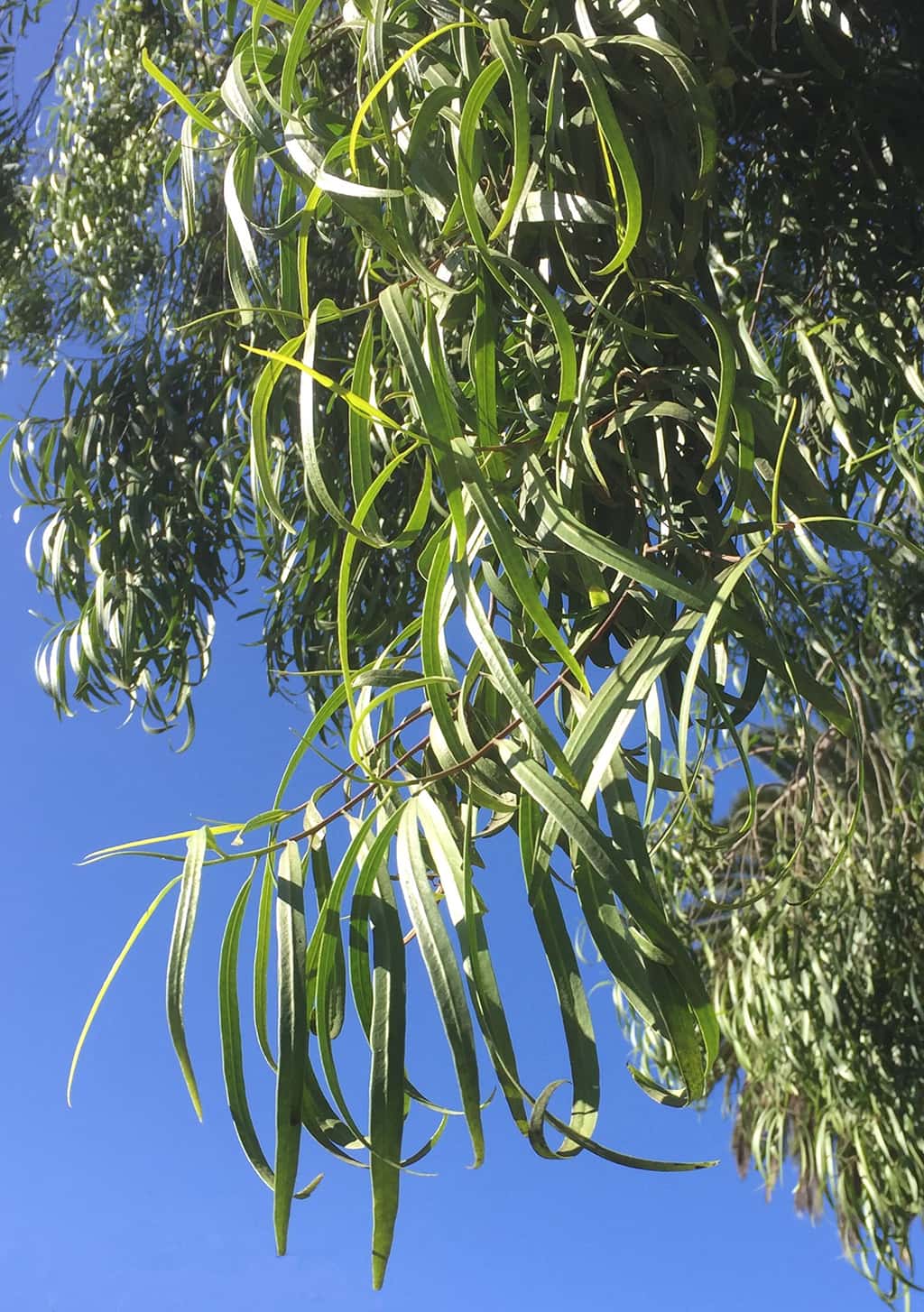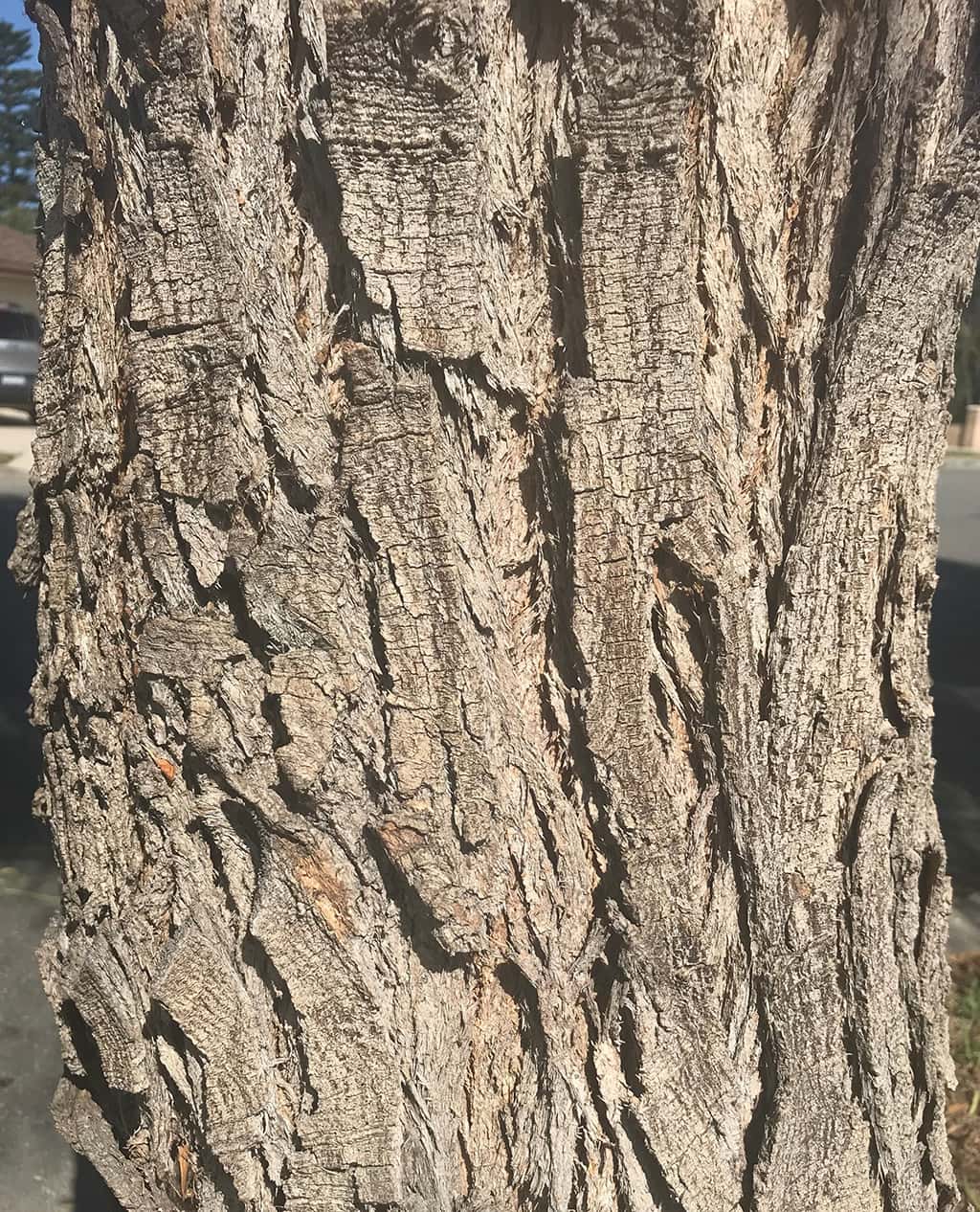Santa Barbara Beautiful Tree of the Month – October 2019

The Australian willow is as graceful and beautiful as a weeping willow by a cool stream – but is as drought-tolerant and hardy as a Eucalyptus in the dry heat. In addition, it is essentially disease- and pest-free and low-maintenance, making it almost the perfect tree for the Santa Barbara area.
Australian willow is a medium-sized tree, normally growing 30-35 feet high and 20-25 feet wide, with a pyramidal to oval-round shaped crown. When young, its branches grow rather upright, but with maturity, these spread wide and droop their pendulous twigs and leaves downwards, creating a willow-like appearance. The smooth and shiny evergreen leaves, 3-6 inches long and ¼ to ½ inches wide, are olive-green and quite aromatic. They form a dense canopy. The gray bark is smooth when young, developing a distinctive furrowing in time.
Large panicles (irregularly branched flower clusters) of creamy white flowers are produced anytime November through June, depending upon the weather. The flowers are described, botanically, as “perfect” – meaning they have both male and female parts within each flower (providing for self-pollination, when necessary). These tiny flowers (¼ inch in diameter) have a lovely citrus scent, which is especially attractive to insect pollinators. The resulting fruit is also tiny (less than ¼ inch in diameter), with a black shiny seed inside.
True to its name, Australian willow is native to the arid interior woodlands of eastern Australia. There, it is known as either “native willow” or by its aboriginal name, “Wilga”, meaning “small tree”. Indigenous Australians would chew the fragrant leaves to alleviate the pain of toothache. They also used the strong wood to carve boomerangs and bowls.
Its botanical name is Geijera parviflora. The genus, Geijera, honors the Swedish botanist, J. D. Geijer. The specific epithet, parviflora, is from the Latin words ‘parvus’, meaning “small”, and ‘flora’, meaning “flowers”. Interestingly, it is in the Citrus family, which explains its aromatic leaves and citrus-scented flowers.
The Australian willow can tolerate a wide variety of soil types and of water conditions, from watered lawns to very dry areas. When established, it is quite drought- tolerant. It provides excellent habitat and seeds for birds, as well as a generous portion of sweet flower nectar for bees. In short, it is an excellent tree for our local streetscapes, parks, parking lots, home gardens, and commercial landscapes.
If you want to enjoy the of beauty of a willow tree, without the water demands of a true weeping willow, then the Australian willow tree is an ideal choice.
There is an unusually large specimen of Australian willow growing in the courtyard of the Goleta Community Center – it is almost 50 feet tall and spreads over 60 feet, with a trunk circumference of 82 inches! This enormous tree is on the Big Tree Registry as the largest of its kind in the United States. A remarkable sight to see.
Australian willows can also be seen, as smaller – but just as fine – street trees, in the 400 Block of West Gutierrez Street, the 1100 Block of East Haley Street, the 900 Block of Laguna Street, the 00 to 200 blocks of East Micheltorena Street, the 1300 and 1900 Blocks of Mountain Avenue, and the 100-200 Blocks of East Pedregosa Street.
Tree-of-the-Month articles are sponsored by Santa Barbara Beautiful, whose many missions include the increase of public awareness and appreciation of Santa Barbara’s many outstanding trees and, in a long-time partnership with the City Parks & Recreation Department, the funding and planting of trees along the City’s streets – a project which has resulted in the planting, to date, of more than 13,000 street trees.
Article and photos by David Gress


